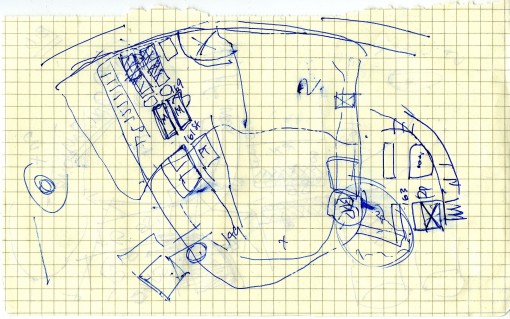Food Fights: Infrastructures of Power
Posted on April 17, 2011 | posted by:Our group was formed with the intention of exploring the roles of various institutional structures in their relationship to food production, distribution, and consumption. Our research focused on both the Hunts Point neighborhood and the regional small-scale food producers that serve it (or could serve it better).
We began by looking at the ways in which local governmental structures connected to the community. We attended meetings of the local Bronx Community Board 2 and New York City Economic Development Corporation, and we made connections with members of these influential groups. There were insightful interviews, including one with Community Board 2 Chairperson, Orlando Marin, which gave us a much clearer picture of the formal and informal workings of local hierarchies.
Additionally, we began to look at the affects of policy on a city, state, and federal level. Attending meetings of the New York City Council Contracts Committee and Food Systems Network NYC helped to contextualize our interests, and began to suggest specific problem areas where a design intervention might prove beneficial.
After identifying that there was a specific infrastructural and communication gaps between regional small-scale local food producers and the consumers in NYC that they were trying to connect with, we began to narrow our focus to look at ways that we might address these disconnects. We interviewed people on both side of the process, including Michael Morris, coordinator of the Hunts Point Wholesale Greenmarket, and Hannah Geller of Fishkill Farms, a small farm in upstate New York.
Throughout our research process, we continuously mapped our findings and used graphic visualization as a tool to explore both evident and hidden disjunctures throughout the systems in questions. This strategy yielded several insights regarding the social and physical infrastructures of food distribution in the region, the most compelling of which was the lack of a coordinating element (tool, organization, etc.) that could clarify and streamline the flow of information needed by both food producers and purchasers. Both parties have specific needs that relate to certainty of supply and demand, and the effect of variables like weather, market dynamics, and transportation costs that significantly complicate the food distribution process.
With this in mind, we can now begin to speculate about how we might intervene in this system to help improve the situation for all parties involved, while addressing the economic, social, physical, and political constraints that currently define it.
~ Aaron Cansler & Benjamin Winter
